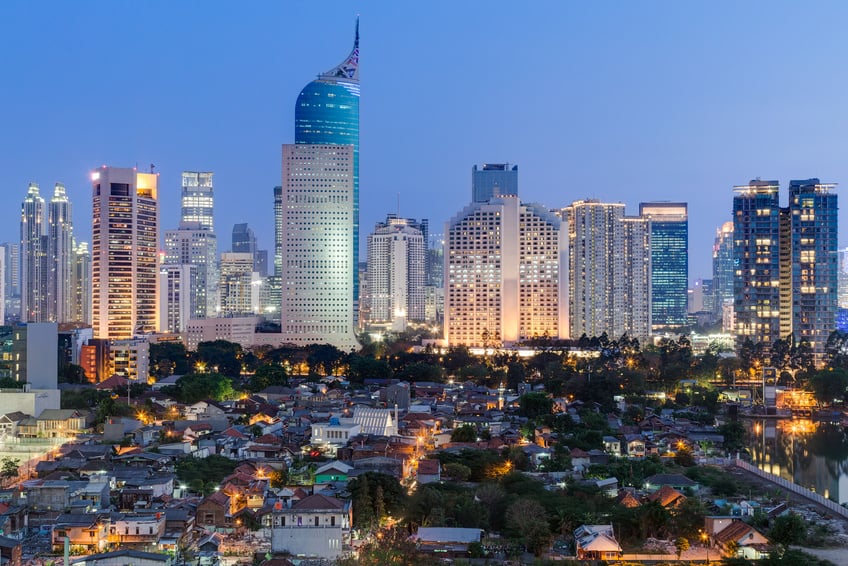Introduction
The Supreme Court recently issued Supreme Court Regulation No. 13 of 2016 on Case Handling Procedures for Corporate Crimes (SC Regulation). The SC Regulation may change the direction of prosecution in criminal cases involving corporations. While corporations are subject to a number of criminal sanctions in numerous laws, such as the Forestry Law, Environmental Law, Anti-Money Laundering Law, and Anti-Corruption Law, there have been few criminal cases where a corporation was brought before a judge and sanctioned. After the issuance of the SC Regulation, the Corruption Eradication Commission (KPK) has stated that it intends to use the SC Regulation to chase corporations in corruption cases.
The SC Regulation is a procedural regulation. It does not deal with crimes and does not expand the sanctions imposed by the laws governing various crimes.
Group and successor liability
The SC Regulation applies to any type of corporation, whether it is in the form of a limited liability company or a partnership. The SC Regulation does not differentiate between local and foreign corporations. Given the broad definition of “corporation” and the non-differentiation of local and foreign corporations, the SC Regulation can also be applicable to foreign corporations, although there may be jurisdiction issues of Indonesian law enforcement agencies over foreign corporations depending on the circumstances of the case.
Criminal liability is not only limited to corporations, but can also be applied to a group of corporations. If a crime is committed by a corporation with its parent or subsidiary or other related corporations, they can also be held accountable for the crime, depending on their roles in the crime.
The SC Regulation also governs the liability of a corporation after a restructuring. Generally, restructuring will not relieve a corporation from its liability; the liability will be borne by the successor or surviving corporation. The SC Regulation goes into further detail on liability in cases of mergers, consolidations, spin-off, and liquidation.
In the event of a merger or consolidation, the surviving corporation bears the liability for any crimes committed before the merger or consolidation. However, the extent of the liability of the surviving corporation is not clear. There are at least two possible interpretations: (1) the liability extends to the whole value of the assets placed in the surviving corporation at any time, or (2) the liability only extends to the value of the assets placed in the surviving corporation by the corporation that committed the crime prior to the merger or consolidation. In any event, the limit of the liability of the corporation should refer to any law that governs the sanctions of the crime. The SC Regulation cannot be used as a basis to impose a higher sanction than the law governing the crime.
In the event of a spin-off, the liability may extend to either one of the corporations being spun off, or both, depending on their roles.
If a corporation is in a liquidation process, the liability still lies with the corporation. Thus, initiating liquidation does not free a corporation from its criminal liability. Criminal liability is only lifted if the corporation has been effectively dissolved, where there can be no criminal liability. However, this does not stop the state from going after the liquidated assets. Assets which are alleged to have been used to conduct a crime or are the result of a crime can be chased after. The claim for these assets is filed against the former management, heirs, or third parties who control the assets of the liquidated corporation.
Seeing this, corporations contemplating restructuring may perhaps take into consideration their liability in light of the restructuring—whether they will lose or be exposed to more liability because of the restructuring. This calls for due diligence to assess the risks that the corporation is exposed to due to pre-existing criminal liability.
Determination of corporations’ fault under the SC Regulation
The SC Regulation provides that in determining whether a corporation is at fault for a crime, judges can look at the following:
- whether the corporation obtained any benefit from the crime or whether the crime was done for the interest of the corporation
- whether the corporation acquiesced to a crime
- whether the corporation took the necessary steps to prevent or mitigate adverse effects and ensure compliance with the law to prevent a crime.
The SC Regulation seems to take a broad approach to whether or not a corporation can be deemed at fault or not. The SC Regulation also seems to suggest that corporations must take active steps to prevent a crime, as inaction leading to a crime can lead to prosecution. While the SC Regulation is not yet tested, corporations may consider implementing more rigid and stricter internal policies to make sure that they prevent their people from committing crimes, and when a crime has occurred, to mitigate its adverse effects.
The SC Regulation ties the act committed by the management to the corporation. If a person in the management ceases to hold the same position or passes away after committing the crime, the corporation is not released from its liability.
Liability of Management
The SC Regulation adopts a wide interpretation of “management”, as it is defined not only to include people having the authority to manage or represent a corporation, but also those that have control over or can influence a corporation’s policies or decisions. Potentially, this means that “management” is not only limited to members of the board of directors of the corporation being investigated/prosecuted.
The investigation of corporations and their management can be done separately or individually. In investigations and court proceedings, the corporation is represented by the management. Thus, a member of the management can be summoned in his/her capacity as a representative of the corporation and in his/her capacity as a member of the management.
Court Sanctions
In a crime involving corporations, judges can sanction the corporation, the management, or both. Under the SC Regulation, if a fine is sanctioned against a corporation and it fails to pay, the prosecutor’s office can confiscate the assets of the corporation to be auctioned off. However, if a fine is sanctioned against a member of the management and he/she fails to pay in accordance with the SC Regulation, he/she will be put in confinement.
The SC Regulation also sets out other sanctions that can be imposed on corporations, i.e., seizure of evidence, restitution, and repair of damage.
New Era of Enforcement
The SC Regulation sheds light on procedural law relating to the handling of corporate crimes, an area that traditionally has not been well regulated. The SC Regulation seems to follow a trend away from the thinking that corporations are not subject to criminal law. This should be a call for corporations to start looking into their internal policies to make sure that they have a set of company policies in place to deal with corporate crimes, so that they may limit their exposure to being entangled in a crime. Lastly, with the issuance of the SC Regulation, corporations looking to enter into a
restructuring deal may also look deeper into the liabilities that they may attract because of the restructuring.



